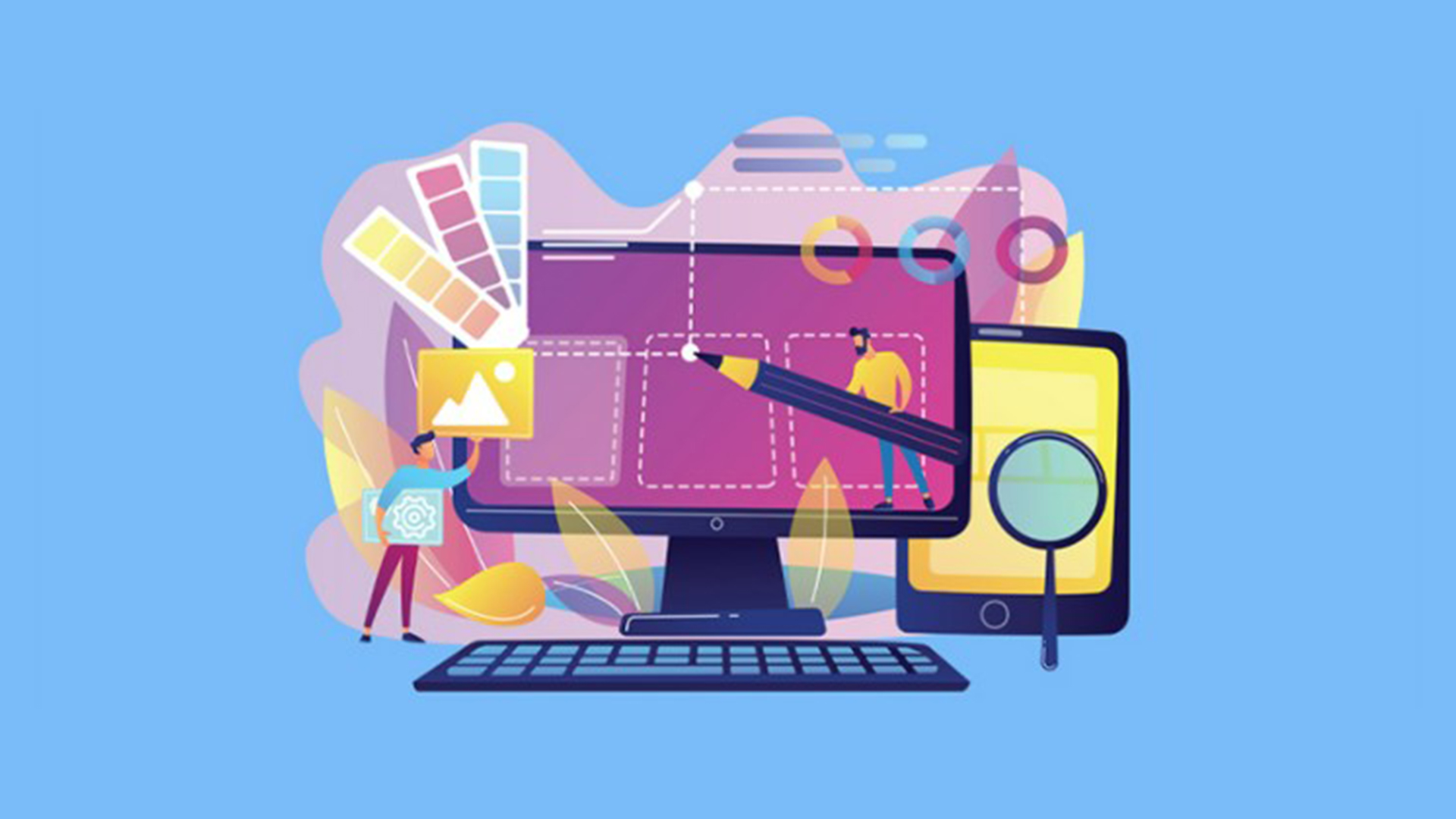All Categories
Featured
Table of Contents
- – Custom Web Design, Development & Digital Marke...
- – Web Design Service - Professionally Designed ...
- – Web Design Service - Professionally Designed ...
- – St Louis Seo Company - St Louis Web Design An...
- – Top Web Design Companies - Find Web Designers...
- – Arch Web Design: Top-rated Web Design Agency ...
- – Top Web Design Agencies Ranked - 2022 Review...
- – What Is A Web Designer? (2022 Guide) - Brain...
- – Website Design - Best Ecommerce Web Design B...
- – 53 Web Design Tools To Help You Work Smarter...
- – Mrw Web Design - Wordpress Websites For Nonp...
Custom Web Design, Development & Digital Marketing ... Tips and Tricks:
Quick summary Use and the utility, not the visual style, figure out the success or failure of a website. Since the visitor of the page is the only person who clicks the mouse and for that reason chooses whatever, user-centric style has developed as a basic technique for successful and profit-oriented web style - web design frederick md.
and the energy, not the visual style, identify the success or failure of a site. Considering that the visitor of the page is the only individual who clicks the mouse and therefore decides whatever, user-centric design has ended up being a standard technique for successful and profit-oriented website design. If users can't use a feature, it may as well not exist.
g. where the search box need to be placed) as it has actually already been performed in a number of posts; rather we concentrate on the techniques which, utilized properly, can result in more sophisticated design choices and streamline the procedure of perceiving presented details. Please observe that you might be thinking about the usability-related articles we have actually released before: Principles Of Good Website Design And Reliable Website Design Guidelines, In order to use the concepts effectively we first require to understand how users communicate with websites, how they think and what are the basic patterns of users' habits.
Web Design Service - Professionally Designed Websites Tips and Tricks:
Visitors look at each new page, scan a few of the text, and click the first link that captures their interest or slightly resembles the important things they're trying to find. In truth, there are big parts of the page they don't even take a look at. The majority of users look for something interesting (or beneficial) and clickable; as soon as some appealing candidates are discovered, users click.
If a page provides users with premium material, they want to compromise the content with advertisements and the design of the website. This is the factor why not-that-well-designed sites with high-quality content gain a lot of traffic over years. Content is more vital than the design which supports it.

Really simple principle: If a website isn't able to fulfill users' expectations, then designer stopped working to get his job done effectively and the company loses money. The higher is the cognitive load and the less intuitive is the navigation, the more willing are users to leave the site and search for alternatives.
Web Design Service - Professionally Designed Websites Tips and Tricks:
Neither do they scan web page in a direct style, going sequentially from one site area to another one. Rather users satisfice; they pick the very first sensible alternative. As soon as they find a link that looks like it might cause the goal, there is an excellent opportunity that it will be right away clicked.
It does not matter to us if we understand how things work, as long as we can utilize them. If your audience is going to imitate you're developing signboard, then design great signboards." Users wish to have the ability to manage their browser and depend on the consistent data discussion throughout the site.
If the navigation and site architecture aren't intuitive, the number of concern marks grows and makes it harder for users to understand how the system works and how to receive from point A to point B. A clear structure, moderate visual ideas and easily identifiable links can assist users to find their path to their goal.
St Louis Seo Company - St Louis Web Design And Internet ... Tips and Tricks:

claims to be "beyond channels, beyond items, beyond distribution". What does it suggest? Because users tend to explore websites according to the "F"-pattern, these three statements would be the first elements users will see on the page once it is packed. Although the design itself is basic and instinctive, to comprehend what the page is about the user needs to look for the response.
Once you've achieved this, you can interact why the system works and how users can gain from it. Individuals won't utilize your website if they can't discover their method around it. 2. Do Not Squander Users' Persistence, In every project when you are going to provide your visitors some service or tool, try to keep your user requirements very little.
First-time visitors are willing to, not filling long web forms for an account they might never utilize in the future. Let users check out the website and discover your services without requiring them into sharing private information. It's not affordable to require users to enter an email address to evaluate the function.
Top Web Design Companies - Find Web Designers Here Tips and Tricks:
Stikkit is a perfect example for an user-friendly service which requires practically nothing from the visitor which is inconspicuous and soothing. Which's what you desire your users to feel on your website. Obviously, Mite requires more. Nevertheless the registration can be done in less than 30 seconds as the kind has horizontal orientation, the user doesn't even need to scroll the page.
A user registration alone suffices of an obstacle to user navigation to reduce incoming traffic. 3. Handle To Focus Users' Attention, As websites provide both static and vibrant material, some aspects of the user interface attract attention more than others do. Certainly, images are more distinctive than the text just as the sentences marked as vibrant are more attractive than plain text.
Focusing users' attention to specific areas of the site with a moderate use of visual aspects can assist your visitors to get from point A to point B without thinking of how it in fact is expected to be done. The less enigma visitors have, the they have and the more trust they can develop towards the company the website represents.
Arch Web Design: Top-rated Web Design Agency For Saas ... Tips and Tricks:
4. Pursue Function Direct exposure, Modern web styles are usually criticized due to their method of guiding users with aesthetically appealing 1-2-3-done-steps, large buttons with visual effects etc. From the style viewpoint these elements in fact aren't a bad thing. On the contrary, such as they lead the visitors through the website material in an extremely simple and easy to use method.
The site has 9 primary navigation options which are visible at the first glimpse. The option of colors may be too light, though. is an essential principle of successful interface style. It does not actually matter how this is attained. What matters is that the content is well-understood and visitors feel comfortable with the way they engage with the system.
com gets straight to the point. No charming words, no exaggerated declarations. Instead a price: just what visitors are trying to find. An optimal service for reliable writing is touse short and succinct expressions (come to the point as rapidly as possible), use scannable layout (classify the content, utilize numerous heading levels, utilize visual components and bulleted lists which break the circulation of consistent text blocks), usage plain and unbiased language (a promotion does not need to sound like advertisement; provide your users some reasonable and unbiased factor why they need to utilize your service or remain on your website)6.
Top Web Design Agencies Ranked - 2022 Reviews - Clutch.co Tips and Tricks:
Users are hardly ever on a site to delight in the style; moreover, in many cases they are searching for the info despite the design - web design frederick md. Make every effort for simpleness instead of intricacy. From the visitors' viewpoint, the best website style is a pure text, without any ads or additional material blocks matching precisely the query visitors used or the material they've been trying to find.
Finch plainly presents the info about the site and provides visitors an option of alternatives without overcrowding them with unneeded material. Not just does it help to for the visitors, but it makes it possible to view the info presented on the screen.
Complex structures are more difficult to check out, scan, evaluate and deal with. If you have the option in between separating two design sections by a noticeable line or by some whitespace, it's usually much better to utilize the whitespace service. (Simon's Law): the better you handle to provide users with a sense of visual hierarchy, the simpler your content will be to perceive.
What Is A Web Designer? (2022 Guide) - Brainstation® Tips and Tricks:
The same conventions and guidelines ought to be applied to all elements.: do the most with the least quantity of hints and visual components. 4 major points to be thought about: simplicity, clarity, diversity, and focus. Simpleness consists of only the elements that are most essential for interaction. Clarity: all components ought to be created so their significance is not unclear.
Conventions Are Our Friends, Conventional style of website components doesn't result in a dull web website. It would be an usability nightmare if all websites had different visual presentation of RSS-feeds.
understand what they're anticipating from a site navigation, text structure, search placement etc. A common example from usability sessions is to equate the page in Japanese (assuming your web users do not understand Japanese, e. g. with Babelfish) and supply your use testers with a task to discover something in the page of various language.
Website Design - Best Ecommerce Web Design By Shopify Tips and Tricks:
Test Early, Test Frequently, This so-called TETO-principle needs to be applied to every web style task as use tests typically offer into considerable issues and issues related to an offered design. Test not too late, not too little and not for the wrong reasons.
Some important points to bear in mind: according to Steve Krug, and screening one user early in the task is much better than screening 50 near the end. Accoring to Boehm's very first law, errors are most frequent throughout requirements and design activities and are the more costly the later on they are removed.
That suggests that you design something, test it, fix it and then check it again. There might be problems which haven't been discovered throughout the very first round as users were almost obstructed by other issues.
53 Web Design Tools To Help You Work Smarter In 2022 Tips and Tricks:

This holds for designers. After you've worked on a website for few weeks, you can't observe it from a fresh viewpoint any longer. You know how it is built and for that reason you know precisely how it works you have the wisdom independent testers and visitors of your website would not have.
It can be linked to other locations such as graphic design, user experience, and multimedia arts, but is more aptly seen from a technological viewpoint. It has actually become a large part of people's daily lives. It is difficult to picture the Internet without animated graphics, different styles of typography, background, videos and music.

Throughout 1991 to 1993 the Web was born. Text-only pages might be seen using a simple line-mode web browser. In 1993 Marc Andreessen and Eric Bina, created the Mosaic browser. At the time there were multiple web browsers, however the bulk of them were Unix-based and naturally text heavy. There had actually been no integrated method to graphic style aspects such as images or noises.
Mrw Web Design - Wordpress Websites For Nonprofits ... Tips and Tricks:
The W3C was developed in October 1994 to "lead the Internet to its complete potential by establishing common protocols that promote its advancement and ensure its interoperability." This prevented any one business from monopolizing a propriety web browser and shows language, which might have altered the effect of the World Wide Web as a whole.
As this has happened the technology of the web has actually also moved on. There have also been substantial modifications in the way people utilize and access the web, and this has actually altered how sites are designed. Given that the end of the web browsers wars [] brand-new web browsers have been launched. A number of these are open source meaning that they tend to have faster development and are more encouraging of new standards.
Learn more about Lovell Media Group LLC or TrainACETable of Contents
- – Custom Web Design, Development & Digital Marke...
- – Web Design Service - Professionally Designed ...
- – Web Design Service - Professionally Designed ...
- – St Louis Seo Company - St Louis Web Design An...
- – Top Web Design Companies - Find Web Designers...
- – Arch Web Design: Top-rated Web Design Agency ...
- – Top Web Design Agencies Ranked - 2022 Review...
- – What Is A Web Designer? (2022 Guide) - Brain...
- – Website Design - Best Ecommerce Web Design B...
- – 53 Web Design Tools To Help You Work Smarter...
- – Mrw Web Design - Wordpress Websites For Nonp...
Latest Posts
Web Design Tools & Software - Webflow Tips and Tricks:
Beginner's Guide: How To Learn Web Design At Home - Medium Tips and Tricks:
Arch Web Design: Top-rated Web Design Agency For Saas ... Tips and Tricks:
More
Latest Posts
Web Design Tools & Software - Webflow Tips and Tricks:
Beginner's Guide: How To Learn Web Design At Home - Medium Tips and Tricks:
Arch Web Design: Top-rated Web Design Agency For Saas ... Tips and Tricks: